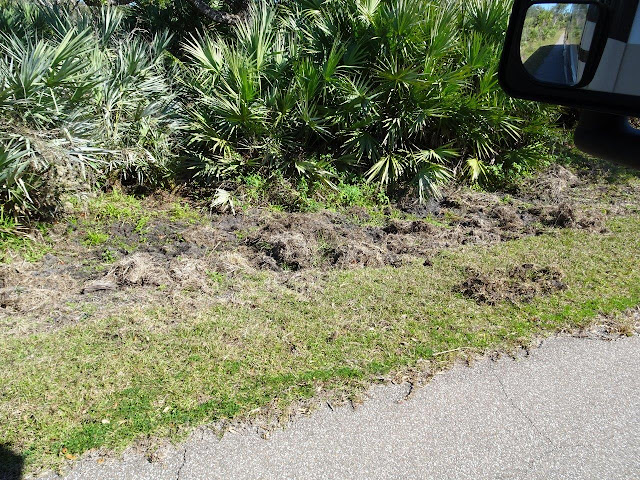Long story, but I had to buy a new federal senior pass, so this was the closest federal area where they were sold. I had never been at this national park, and it was only about 60 miles south of Gamble Rogers SP, so I spent a day driving down there.
It was a beautiful sunny and warm day, so perfect to go to the beach! Canaveral National Seashore is a long, skinny piece of land near the space center and launch pads.
Just past the entrance booth was a boardwalk over an ancient shell mound. These mounds are common along beaches where ancient people ate oysters and other shellfish and discarded their shells as they ate. In some places, shell mounds can be up to 20' high. This one had a boardwalk so walkers did not destroy the mound.
It was nice to be higher and able to look into the trees and shrubbery from above.
Along the boardwalk, I noticed this orange tree. Obviously, someone lived here a long time ago.
In this photo, you can see the ocean on the right and the inland waterway on the left. In the distance are some beachfront hotels outside of the park.
This view looks south and shows the inland waterway.
An osprey on an electric pole. Osprey eat fish so are often found wherever there is water.
Stopped at the visitor center and bought a couple of books and some postcards.
Just before the last beach parking area at the end of the narrow peninsula was this sign warning people of the nude beach! And no, I did not stop here, so I saw no nude sunbathers.
This is an armadillo. They spend 90% of their time snuffling in the grass for insects.
It was a pretty drive today. Glad this is a national park because the lovely area and the beach would have been quickly developed with big hotels and condos.
It is illegal to walk on dune areas along beaches in Florida because these plants protect the land during hurricanes.
The beach looking north.
And these are royal terms. Love their black head ruffs.
Whenever you see an area that looks as if it had been rototilled, that is pig damage. Wild hogs are extremely common and use their snouts to dig up grubs and roots, causing a lot of damage as a result.


















No comments:
Post a Comment